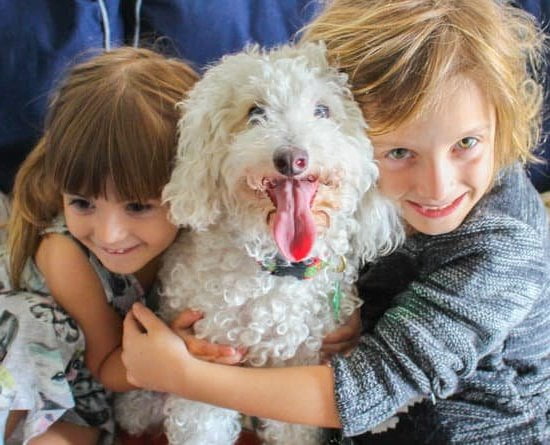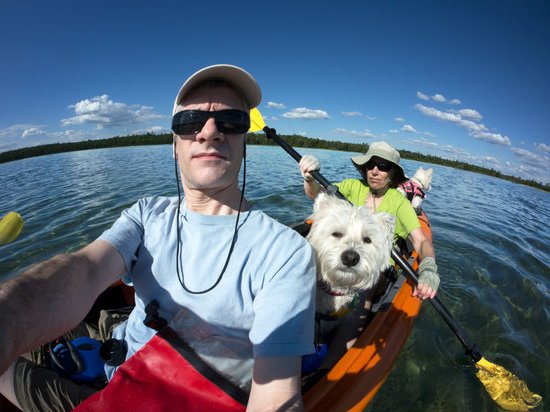Introduction
Treats can be an effective and rewarding tool for dog training. Training a dog takes patience, dedication, and positive reinforcement. Treats can provide a fun, easy way to reward dogs for desirable behaviors during the learning process. The proper use of treats during the training process will not only help your dog learn desired behaviors quickly and efficiently, but also help strengthen the bond between you and your canine companion.
When choosing treats for training purposes, it is important to opt for high-value (e.g., soft) treats that are both small in size and quick to consume. This ensures that there is minimal interruption and distraction while your pup is learning new tricks or commands – plus they’ll appreciate the tasty reward! Additionally, treats should be given as part of consistent reinforcement – only when your pup performs correctly or follows commands correctly should you assign them a treat. This helps create an understanding in your pup that certain behaviors produce desirable outcomes: rather than providing rewards at random intervals or without incentive, consistent reinforcement creates the expectation in dogs that following command produces treats as rewards. In addition, using treats thoughtfully provides additional motivation to learn faster because successful completion of tasks will produce food rewards sooner rather than later!
Identifying the Ideal Treats for Your Dog
When training dogs, identifying the best treats for your pup is an essential part of the process. Not all treats are created equal, and it is important to assess what type of food motivates your canine the most and makes them sit up and take notice. The right treat can really drive enthusiasm when teaching basic commands such as ‘Sit’, ‘Stay’, and ‘Come’, as well as specialized tricks.
The ideal treat depends on individual preferences as every dog is different and responds differently to different type of food. Some canine companions may not have any special favorite snacks, while others have a special go-to treat that they love more than anything else in this world. Generally speaking, smaller pieces of treats tend to be more effective when training since small chunks are easier to eat quickly and encourage faster response. High value treats such as natural meat-based snacks provide great rewards for good behavior as they hold your pup’s attention longer than cheaper synthetic versions do. It is easy to find lower priced options but bear in mind that these kinds of treats offer less nutritional value and often contain an excess of sugar which can lead to unwanted weight gain. When deciding what kind of snack works for you and your pet, think about how strong your pet’s reactions are in regards to various treats available on the market – this will help you discriminate between those that merely excite him or her semi-moderately from those that pull out their full A game! Keep an eye out for receptiveness not just from initial trials but also after repeated use of one particular snack – remember that repetition is key when it comes to dog training so try not to change up snacks too much once you’ve found one that’s effective!
An Overview of the Best Types of Treats for Dog Training
When it comes to a successful dog training session, one of the most important things to consider is treats. Treats are an essential component in any training program, from basic commands to advanced tricks. There are several things to keep in mind when choosing the best treats for your pup. For starters, you should ensure that the treat is small enough for your pup to consume quickly and easily so that they are motivated during each training session. Additionally, different types of treats should be rotated regularly to keep your pup excited and interested.
Commonly used treats for dog training can include soft food like jerky strips, soft cheese cubes, or smaller pieces of wet food. It’s best to use low-calorie options such as baby carrots or green beans as snacks throughout the day (in between meal times). Homemade treats like frozen yogurt drops, banana slices wrapped in deli meat slices, or crunchy kibble pieces altered with peanut butter can also be great choices for refreshing rewards during extended sessions. Remember not to over feed your pup due to spoiling their appetite even further! When rewarding completion of an exercise or step within an exercise with larger treats, limit them down as much as possible. Lastly, when possible, use items other than food for rewards. Sometimes using interactive toys for extra motivation can really take a training session up a notch!
Making a Stock of Treats for Training Sessions
When it comes to training your dog, having a stock of treats is essential. Some treats are better suited for certain types of obedience or agility work, while others are just looking for snacks to munch on while they learn. It’s important to always have a variety of treats available that you can reward your pup with during their training sessions. For heavier obedience and agility exercises, your dog will need higher-calorie rewards that will keep them motivated enough to perform their desired behavior; this could mean using larger pieces of meat, like chicken, hot dogs or beef jerky. If you’re encouraging simpler behaviors like sit or come, then lower caloric treats can do the job; these may include pieces of kibble from your dog’s regular diet cut into small bites, as well as freeze-dried liver and other healthier options. Dog treats don’t have to be unhealthy either – there are lots of natural and nutritious snack options that make great rewards as well! When shopping for treats for your pup make sure you look out for ones made with better ingredients such as free-range animal sources and vegetables; this way you can feel reassured knowing that your pup is getting the healthiest reward possible!
Obtaining the Most from Treats During Training Exercises
When it comes to dog training, treats can play a crucial role in reinforcing desired behavior. Rewarding a pet with a treat, such as a bite-sized piece of chicken or hotdog, gives them positive reinforcement for completing specific exercises or tasks. It’s important to remember that not all treats are created equal when it comes to dog training. It’s best to use high quality, healthful treats that are rich in protein and have minimal amounts of sugar, fat, and calories so as not to upset your pup’s digestive system. However, if this isn’t an option for you, then small portions or slices of fruit or vegetable can be effective in providing the desired result.
Additionally, keep in mind that the size of the treat should match the task completed by your pup. Complex tasks usually require larger rewards than simple ones since they involve more effort on the part of your dog; whereas smaller treats might be suitable when teaching basic commands like ‘sit’ or ‘stay.’ Besides training with treats directly after your pup completes an exercise every time they succeed, you can also provide intermittent rewards intermittently over the course of several practice sessions throughout the day. This will help keep them motivated while reinforcing good behavior with rewarding consequences. Lastly, it’s important that when issuing rewards you do so with praise and affection in addition to edible snacks; letting your furry friend know that he/she is doing something right encourages them further!
Tips for Making Treats an Effective Tool During Dog Training
Treats can be a great way to motivate and reward your dog during training sessions. Here are some tips for making treats an effective tool in your dog training:
1. Choose treats with care: the treats should be small enough pieces so that the dog can easily consume them when given as rewards during training. Avoid giving unhealthy foods such as sweets or processed snacks as these can cause health issues to your pet. Instead, opt for healthy treats that contain protein, vitamins and other minerals that provide nutrition to your pet.
2. Remove distractions: Training with distractions present will only take away from the effectiveness of your efforts and compromise the success of a pup’s learning progress. Make sure the environment is calm and relaxed before you start the session.
3. Give treats after successful responses: Treats should act as rewards when your pup has achieved something correctly and made a successful response to the desired behaviour you have asked him/her to do. They should never be used as bribes, tempting or coaxing a pup into responding in a desired way but rather as reinforcement at the end of a successful response.
4. Make use of different levels of treatment rewards: Developing various levels of reward will make it easier for you to adjust depending on how quickly your pup learns certain things or how well he does with certain exercises during the session. A greater reward may be required for more difficult tasks while smaller ones can be used on techniques previously mastered by your pup . This will serve to constantly challenge them even if they have passed an exercise many times before and help maintain their motivation throughout the learning process .
Advantages of Using Treats to Train Dogs
Using treats to train dogs is a common and effective method for it is easy to use and does not require much time. Treats help reinforce a positive behavior, as dogs are typically motivated by food. If a dog is rewarded with yummy treats when he performs a desired action, he will be more likely to repeat that behavior in the future. The regular use of treats can help create a desirable behavior by providing an incentive for the dog to act properly.
Treats provide an immediate reward for performing or responding to commands and can be especially helpful when training new or difficult behaviors. Dogs being trained with treats learn quicker because of the incentive that comes with getting one after responding correctly. Treats can also assist in maintaining focus on trainer’s orders while executing a command or task. They are easily exchanged during the training process and reward dogs quickly if they meet expectations. Furthermore, providing smaller portions of treats helps prevent obesity in pet dogs since they can easily get full if large amounts are given repetitively.
Avoiding Pitfalls When Trying to Train a Dog with Treats
When it comes to training your dog with treats, there are a few major pitfalls you should avoid. The first is giving them too much food at one time. If you give your pup too big of a treat he may choke, so keep the size appropriate for their breed and age. Secondly, try not to give the same treat every single time or your pooch may become bored with the reward and lose interest in learning the command.
Another common mistake is to give treats sporadically during training exercises. Consistency is key when teaching your pup so it’s important that treats are delivered consistently for each successful response. Stick to a schedule and use verbal praise such as good boy or girl as often as possible rather than just relying on treats for recognition. Lastly, don’t rely solely on treats for training. Instead, find a balance between positive reinforcement and discipline to reinforce desirable behaviors in your pup.
Final Takeaways
When it comes to training your dog, treats are a great incentive for providing positive reinforcement. However, it is important to use the right kind of treats in order to successfully motivate your pup and reach desired behaviors. High-value treats such as small chunks of fresh animal protein like chicken, beef and turkey are best for getting dogs’ attention during training sessions, as these types of food provide a more exciting flavor than kibble or biscuits. Additionally, it is important to make sure that the size of the treat corresponds with the size of the dog you are working with: larger treats should be given to larger breeds, while smaller ones should be given to smaller breeds. Lastly, while offering soft treats occasionally is alright, remember that hard treats can help keep your dog’s teeth clean by helping scrape away plaque.
Overall, offering incentives to your dog in terms of food rewards is an important part of achieving whatever goals you have set out in training them. Be sure to choose reward items that match their size and keep them focused on task. Focus on using high value proteins as often as possible and only offer softer snacks every once in a while so that those crunchy rewarding snacks don’t lose their appeal . Above all else though remain patient; if mastering the commands doesn’t happen immediately just keep treating and eventually you’ll see desired results!

Welcome to the blog! I am a professional dog trainer and have been working with dogs for many years. In this blog, I will be discussing various topics related to dog training, including tips, tricks, and advice. I hope you find this information helpful and informative. Thanks for reading!





